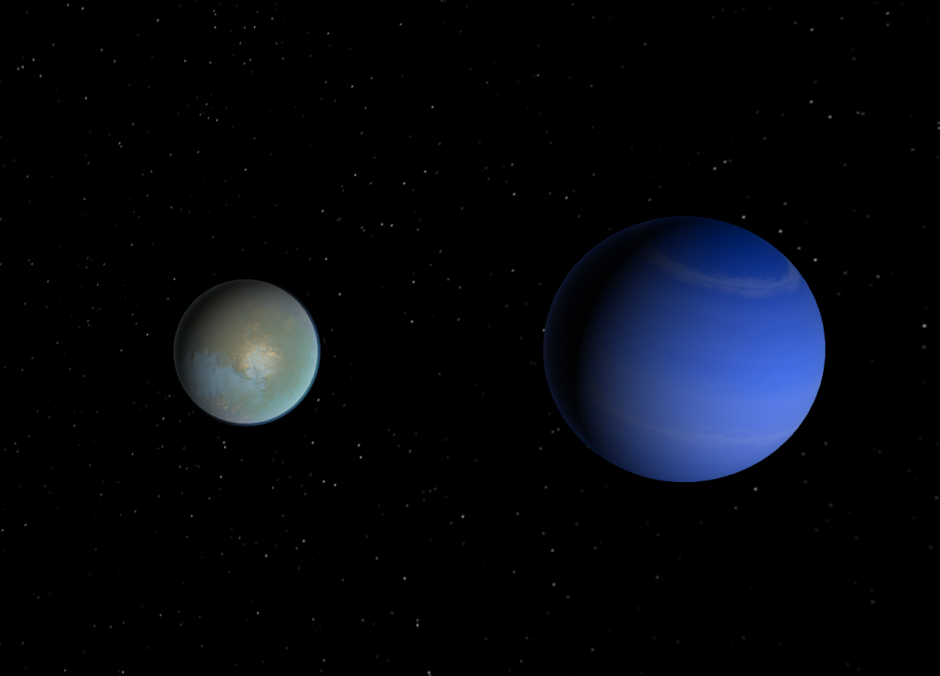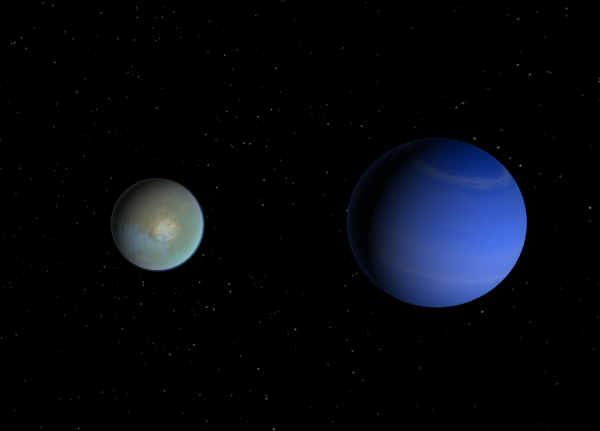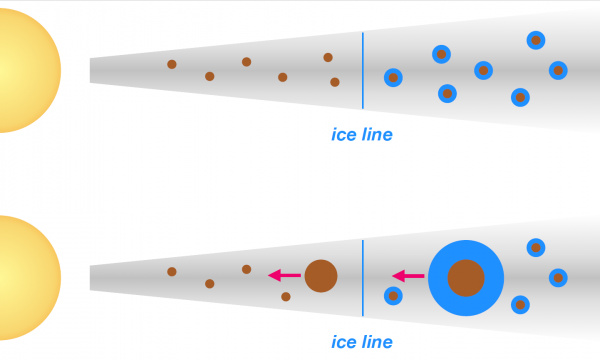How water explains missing planets

Space exploration telescopes have revealed that planets between the size of 1.3 and 2.4 Earth radii seem to be c comparatively rare. Scientists under the lead of the International Space Science Institute and the National Centre of Competence PlanetS have found a remarkably simple explanation.

An illustration of a terrestrial planet with 1.3 Earth radii and a water-rich sub-Neptune 2.4 times the size of Earth. Sizes in between are far less common and fall in the so-called radius valley.
Since 1995, scientists have found over 4000 planets outside the boundaries of our solar system. Some very small, with as little as a third of Earth’s radius. Other very large, up to 20 times wider than our home planet. These extremes are rare, however. Most known planets measure between 1 and 4 times the radius of Earth.
Within this range of common planet sizes, two were found particularly often: Planets with 1.3 and 2.4 Earth radii. “Sizes between these two peaks are much less common and thus form the so-called radius-valley”, Julia Venturini, lead author and researcher at the International Space Science Institute explains. In a study published in the journal Astronomy and Astrophysics, she and her collaborators have now demonstrated why this could be the case.
Water or no water
“We found that it has to do with the formation of planets”, Venturini explains “namely the regions in which the planets form”. Previous studies had been able to account for the radius-valley, but only by limiting the formation of the planets to a specific region around their star. Within this region, no condensed water exists. Thus, such planets would be dry. But, as Venturini points out: “This is at odds with planet formation theory. Planets form very easily beyond the ice line (the cold region of around the star beyond which water condenses), accrete plenty of water, and then typically migrate inwards, ending up closer to the star”.

An illustration of the planet formation within and beyond the ice-line. The planets that form further out grow more massive due to the accumulation of larger icy pebbles.. After formation, the planets move closer to the star. Credits: Julia Venturini
The solution that Venturini and her colleagues came up with imposes no such limitations on the planets’ formation location. “We found that planets which form only out of dry rocky material stay much smaller than ones that also accumulate ice as they grow”, she explains. “This has to do with the different collisional properties of rocks and ice”. Using computer models, they could reproduce the radius-valley based on these distinct formation regions, separated by the so-called ice-line. Thus, the first common planet size of around 1.3 Earth radii comes from dry terrestrial planets and the second group around 2.4 Earth radii mostly consists of water-rich worlds.

Sketch of the two peaks of common planet sizes with dry and water-rich planets, as well as the radius-valley between them, as computed by Venturini et al. (2020). Credits: Julia Venturini
Time and new telescopes will tell

“These results could help us with preliminary characterizations of planets beyond our solar system”, Venturini hopes. But they first have to be confirmed. With the development of ever more sophisticated telescopes, such as the planned Atmospheric Remote-sensing Infrared Exoplanet Large-survey (ARIEL) of ESA, the compositions of faraway planets could be revealed in more detail and would thus allow to test the results of Venturi and her colleagues.
Reference details:
The nature of the radius valley: Hints from formation and evolution models, Julia Venturini, Octavio M. Guilera, Jonas Haldemann, María P. Ronco, Christoph Mordasini
https://www.aanda.org/10.1051/0004-6361/202039141

